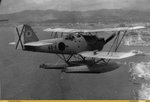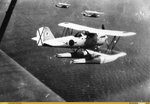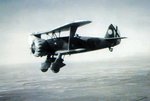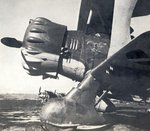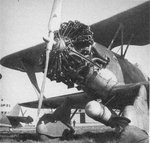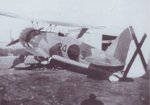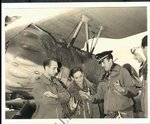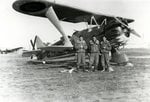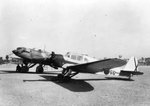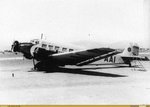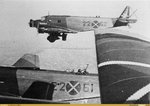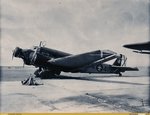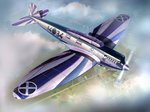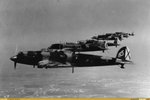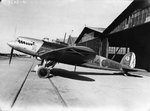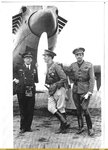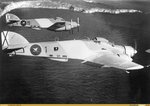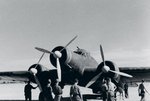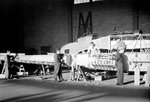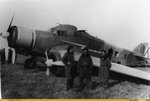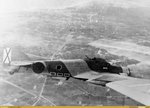- Thread starter
- #101
Navigation
Install the app
How to install the app on iOS
Follow along with the video below to see how to install our site as a web app on your home screen.
Note: This feature may not be available in some browsers.
More options
You are using an out of date browser. It may not display this or other websites correctly.
You should upgrade or use an alternative browser.
You should upgrade or use an alternative browser.
Spanish Civil War: Nationalist Air Force
- Thread starter gekho
- Start date
Ad: This forum contains affiliate links to products on Amazon and eBay. More information in Terms and rules
More options
Who Replied?- Thread starter
- #102
The Henschel Hs 123 was a single-seat biplane dive bomber and close-support attack aircraft flown by the German Luftwaffe during the Spanish Civil War and the early to mid-point of World War II. Although an obsolete design, it continued to see front-line service until 1944, and was only withdrawn due to a lack of serviceable airframes and spare parts.
As a personal request of Oberst (later Generalfeldmarschall) Wolfram von Richthofen, chief of staff of the Legion Kondor, five aircraft had been deployed to Spain as a part of the Legion 'Kondor, intended to be used as tactical bombers. In their intended role, the Hs 123s proved to be somewhat of a failure, hampered by their small bomb capacity and short range. Instead, the Hs 123s based in Seville were used for ground support, a role in which their range was not such a detriment, and where the ability to accurately place munitions was more important than carrying a large load. The combat evaluation of the Hs 123 demonstrated a remarkable resiliency in close-support missions, proving able to absorb a great deal of punishment including direct hits on the airframe and engine. The Nationalists in Spain were suitably impressed with the Hs 123 under battle conditions, purchasing the entire evaluation flight and ordering an additional 11 aircraft from Germany. The Spanish Hs 123s were known as "Angelito" (dear angel or little angel), and at least one Hs 123 was in service with the Ejército del Aire (Spanish Air Force) after 1945.
As a personal request of Oberst (later Generalfeldmarschall) Wolfram von Richthofen, chief of staff of the Legion Kondor, five aircraft had been deployed to Spain as a part of the Legion 'Kondor, intended to be used as tactical bombers. In their intended role, the Hs 123s proved to be somewhat of a failure, hampered by their small bomb capacity and short range. Instead, the Hs 123s based in Seville were used for ground support, a role in which their range was not such a detriment, and where the ability to accurately place munitions was more important than carrying a large load. The combat evaluation of the Hs 123 demonstrated a remarkable resiliency in close-support missions, proving able to absorb a great deal of punishment including direct hits on the airframe and engine. The Nationalists in Spain were suitably impressed with the Hs 123 under battle conditions, purchasing the entire evaluation flight and ordering an additional 11 aircraft from Germany. The Spanish Hs 123s were known as "Angelito" (dear angel or little angel), and at least one Hs 123 was in service with the Ejército del Aire (Spanish Air Force) after 1945.
Attachments
Last edited:
- Thread starter
- #103
- Thread starter
- #104
- Thread starter
- #105
The Klemm Kl 32 was a touring aircraft developed in Germany in 1932 based on the Klemm Kl 31 as a competitor in the Challenge 1932 touring aircraft competition. Like its predecessor, it was a conventional, low-wing cantilever monoplane with fixed, tailskid undercarriage. The Kl 32, however, had a smaller cabin (seating three), and a fuselage built from wood rather than metal. Eight Kl 32s were entered in the competition, seven by German teams and one by a Swiss team. These were powered by a variety of engines including the Bramo Sh 14, Argus As 8, de Havilland Gipsy, and Hirth HM 150. Notable German pilots included Robert Lusser (who designed the aircraft), Wolf Hirth, and Reinhold Poss. Hirth won the short take-off trial in his Kl 32, and Poss tied for second place in the overall competition with his. Five of the teams flying Kl 32s finished in the top ten in the "rally over Europe" part of the competition, and five of the top ten scores overall were achieved by teams flying Kl 32s.
Designed as tourism, liaison an light transport aircraft, three units arrived to Spain with the Legion Kondor. They were coded with the number 30, like all the other light planes. After the war they were coded L4, being transfered to the 91 Squadron, to be used as a trainning aircraft. They were retired in 1955.
Designed as tourism, liaison an light transport aircraft, three units arrived to Spain with the Legion Kondor. They were coded with the number 30, like all the other light planes. After the war they were coded L4, being transfered to the 91 Squadron, to be used as a trainning aircraft. They were retired in 1955.
Attachments
Last edited:
- Thread starter
- #106
The Junkers Ju 52 (nicknamed Tante Ju - "Auntie Ju" - and "Iron Annie") was a German transport aircraft manufactured from 1932 to 1945. It saw both civilian and military service during the 1930s and 1940s. In a civilian role, it flew with over 12 air carriers including Swissair and Lufthansa as an airliner and freight hauler. In a military role, it flew with the Luftwaffe as a troop and cargo transport and briefly as a medium bomber. The Ju 52 continued in postwar service with military and civilian air fleets well into the 1980s.
The Ju 52 was similar to the company's previous Junkers W33, although larger. In 1930, Ernst Zindel and his team designed the Ju 52 at the Junkers works at Dessau. The aircraft's unusual corrugated duralumin metal skin, pioneered by Junkers during World War I, strengthened the whole structure. The Ju 52 had a low cantilever wing, the mid-section of which was built into the fuselage, forming its underside. It was formed around four pairs of circular cross section duralumin spars with a corrugated surface that provided torsional stiffening. A narrow flap ran along the whole trailing edge, well separated from it. This flap lowered the stalling speed and the arrangement became known as the "double wing". The outer sections of this operated differentially as ailerons, projecting slightly beyond the wing tips with control horns. The strutted horizontal stabilizer carried horn-balanced elevators which again projected and showed a significant gap between them and the stabilizer, which was adjustable in-flight. All stabilizer surfaces were corrugated. The fuselage was of rectangular section with a domed decking, all covered with corrugated light alloy. There was a port side passenger door just aft of the wings, with windows stretching forward to the pilots' cabin. The main undercarriage was fixed and divided; some aircraft had wheel fairings, others not. There was a fixed tail skid, or later tail wheel. Some aircraft were fitted with floats or skis instead of the main wheels.
In its original configuration, designated the Ju 52/1m, the Ju 52 was a single-engined aircraft, powered by either a BMW or Junkers liquid-cooled engine. However, the single-engine model was underpowered, and after seven prototypes had been completed, all subsequent Ju 52s were built with three radial engines as the Ju 52/3m (drei motoren - "three engines"). Originally powered by three Pratt Whitney Hornet radial engines, later production models mainly received 574 kW (770 hp) BMW 132 engines, a licence-built refinement of the Pratt Whitney design. Export models were also built with 447 kW (600 hp) Pratt Whitney Wasp R-1340 and 578 kW (775 hp) Bristol Pegasus VI engines. The two wing-mounted radial engines of the Ju 52/3m had full-chord cowlings and were noticeably toed-out, from being mounted at an almost perpendicular angle to the wing's tapered leading edge. The central engine had a half-chord cowling like a Townend ring as the fuselage behind it was increasing in diameter, though some later aircraft had deeper cowlings. Production Ju 52/3m aircraft flown by Lufthansa before World War II, as well as Luftwaffe-flown Ju 52s flown during the war, usually used an air start system to turn over their trio of radial engines, using a common compressed air supply that also operated the main wheels' brakes.
The Ju 52 was similar to the company's previous Junkers W33, although larger. In 1930, Ernst Zindel and his team designed the Ju 52 at the Junkers works at Dessau. The aircraft's unusual corrugated duralumin metal skin, pioneered by Junkers during World War I, strengthened the whole structure. The Ju 52 had a low cantilever wing, the mid-section of which was built into the fuselage, forming its underside. It was formed around four pairs of circular cross section duralumin spars with a corrugated surface that provided torsional stiffening. A narrow flap ran along the whole trailing edge, well separated from it. This flap lowered the stalling speed and the arrangement became known as the "double wing". The outer sections of this operated differentially as ailerons, projecting slightly beyond the wing tips with control horns. The strutted horizontal stabilizer carried horn-balanced elevators which again projected and showed a significant gap between them and the stabilizer, which was adjustable in-flight. All stabilizer surfaces were corrugated. The fuselage was of rectangular section with a domed decking, all covered with corrugated light alloy. There was a port side passenger door just aft of the wings, with windows stretching forward to the pilots' cabin. The main undercarriage was fixed and divided; some aircraft had wheel fairings, others not. There was a fixed tail skid, or later tail wheel. Some aircraft were fitted with floats or skis instead of the main wheels.
In its original configuration, designated the Ju 52/1m, the Ju 52 was a single-engined aircraft, powered by either a BMW or Junkers liquid-cooled engine. However, the single-engine model was underpowered, and after seven prototypes had been completed, all subsequent Ju 52s were built with three radial engines as the Ju 52/3m (drei motoren - "three engines"). Originally powered by three Pratt Whitney Hornet radial engines, later production models mainly received 574 kW (770 hp) BMW 132 engines, a licence-built refinement of the Pratt Whitney design. Export models were also built with 447 kW (600 hp) Pratt Whitney Wasp R-1340 and 578 kW (775 hp) Bristol Pegasus VI engines. The two wing-mounted radial engines of the Ju 52/3m had full-chord cowlings and were noticeably toed-out, from being mounted at an almost perpendicular angle to the wing's tapered leading edge. The central engine had a half-chord cowling like a Townend ring as the fuselage behind it was increasing in diameter, though some later aircraft had deeper cowlings. Production Ju 52/3m aircraft flown by Lufthansa before World War II, as well as Luftwaffe-flown Ju 52s flown during the war, usually used an air start system to turn over their trio of radial engines, using a common compressed air supply that also operated the main wheels' brakes.
Attachments
-
 Junkers%20Ju-52%20006.jpg125.9 KB · Views: 580
Junkers%20Ju-52%20006.jpg125.9 KB · Views: 580 -
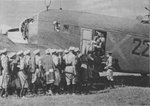 Junkers%20Ju-52%20002.jpg122.5 KB · Views: 553
Junkers%20Ju-52%20002.jpg122.5 KB · Views: 553 -
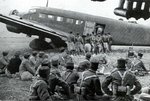 Junkers%20Ju-52%20001.jpg128 KB · Views: 558
Junkers%20Ju-52%20001.jpg128 KB · Views: 558 -
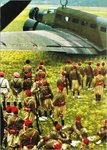 Junkers%20Ju-52%20007.jpg309.8 KB · Views: 604
Junkers%20Ju-52%20007.jpg309.8 KB · Views: 604 -
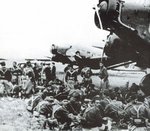 Junkers%20Ju-52%20003.jpg134.4 KB · Views: 552
Junkers%20Ju-52%20003.jpg134.4 KB · Views: 552 -
 704579_10200204220932426_1186822336_o.jpg109.4 KB · Views: 347
704579_10200204220932426_1186822336_o.jpg109.4 KB · Views: 347 -
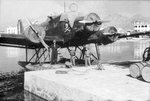 57310_4967248983223_1477091647_o.jpg101.3 KB · Views: 595
57310_4967248983223_1477091647_o.jpg101.3 KB · Views: 595
Last edited:
- Thread starter
- #107
In 1936, sixty of these Ju 52/3mg3e were sent to Spain where they served as bombers and transports during the Spanish Civil War.Hundreds of Junkers Ju-52 sorties flew 13,000 troops and their equipment from Franco's Moroccan Army to Spain in July 1936. These aircrafts were also used as bombers for a short period of time, being replaced in this role when the first He-111s arrived to the peninsula; however it is proved that the Ju-52 also took part in the bombing of Guernica, along with the He-111, Do-17, SM-81 SM-79. Experiences in Spain also led to a redesign of the Ju 52, which received a tail-wheel rather than a tailskid as standard. As well as a loading door on the right hand side the rear fuselage was fitted with a freight door for bulky loads and the fuselage ¬oor was considerably strengthened.
Attachments
Last edited:
- Thread starter
- #108
The Heinkel He 70 was a German mail plane, passenger, liaison, training and bomber aircraft of the 1930s. Although useful, it had a relatively brief commercial career before it was replaced by types which could carry more passengers. As a combat aircraft, it was a not a great success because it rapidly became outdated. Nevertheless, the He 70 was a brilliant design for its day, setting no fewer than eight world speed records by the beginning of 1933. The Heinkel He 70 Blitz was designed in the early 1930s to serve as a fast mailplane for Deutsche Lufthansa. The He 70 was developed in response to Lufthansa request for a faster aircraft than the Lockheed Vega and Orion (as used by Swissair) for employment on short routes. It was a low-wing monoplane, with the main characteristics of its revolutionary design its elliptical wing, which the Günther brothers had already used in the Bäumer Sausewind sports plane before they joined Heinkel, and its small, rounded control surfaces. In order to meet the demanding speed requirements, the design minimised drag, with countersunk rivets giving a smooth surface finish and a retractable undercarriage, a novel feature for a German aircraft. It was powered by a BMW VI V-12 engine, cooled by ethylene glycol rather than water, allowing a smaller radiator and therefore reducing drag. The pilot and radio operator were seated in tandem, with a cabin housing four passengers on two double seats facing each other.
Attachments
Last edited:
- Thread starter
- #109
Twenty-eight aircraft were sent with the Legion Condor, where they were used during the Spanish Civil War as fast reconnaissance aircraft. Their high speed gave them the nickname Rayo (lightning), being used as fast reconnaissance aircraft and more easily bombers. Eleven war survivors flew until 1950 with the Ejercito del Aire as liasson aircrafts.
Attachments
Last edited:
- Thread starter
- #110
The Savoia-Marchetti SM.79 Sparviero ("Sparviero" is the Italian word for "Sparrowhawk") was a three-engine Italian bomber with a wood and metal structure that saw service in World War II. Originally designed as a fast passenger transport aircraft, this low-wing monoplane, in the years 1937-9, set 26 world records that qualified it, for some time, as the fastest medium bomber in the world. The SM.79 first entered action in the Spanish Civil War and during World War II saw duty on all fronts. But it became famous and achieved many successes as a torpedo bomber in the Mediterranean theater. The SM.79 was an outstanding aircraft and was certainly the best known Italian aeroplane of World War II. It was easily recognizable due to its distinctive fuselage "hump", and was well-liked by its crews who gave it the nickname Gobbo Maledetto ("damned hunchback"). It was the most widely produced Italian bomber of World War II, with some 1,300 built and remained in service in Italy until 1952.
The SM.79 was a cantilever low wing monoplane trimotor, with a retractable taildragger undercarriage. The fuselage of the SM.79 was made of a welded tubular steel frame and covered with duralumin in the forward section, duralumin and plywood on the upper fuselage surface, and fabric on all other surfaces. The wings were of all-wood construction, with the trailing edge flaps and leading edge slats (Handley-Page type) to offset its relatively small size. The internal structure was made of three spars, linked with cantilevers and a skin of plywood. The wing had a dihedral of 2° 15'. Ailerons were capable of rotating through +13/-26°, and were used together with the flaps in low-speed flight and in takeoff. Its capabilities were significantly greater than its predecessor, the SM.75, with over 1,715 kW (2,300 hp) available and a high wing loading that gave it characteristics not dissimilar to a large fighter.
The SM.79 was a cantilever low wing monoplane trimotor, with a retractable taildragger undercarriage. The fuselage of the SM.79 was made of a welded tubular steel frame and covered with duralumin in the forward section, duralumin and plywood on the upper fuselage surface, and fabric on all other surfaces. The wings were of all-wood construction, with the trailing edge flaps and leading edge slats (Handley-Page type) to offset its relatively small size. The internal structure was made of three spars, linked with cantilevers and a skin of plywood. The wing had a dihedral of 2° 15'. Ailerons were capable of rotating through +13/-26°, and were used together with the flaps in low-speed flight and in takeoff. Its capabilities were significantly greater than its predecessor, the SM.75, with over 1,715 kW (2,300 hp) available and a high wing loading that gave it characteristics not dissimilar to a large fighter.
Attachments
-
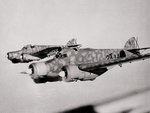 Savoia%20Marchetti%20SM-79%20Sparviero%20001.jpg124 KB · Views: 598
Savoia%20Marchetti%20SM-79%20Sparviero%20001.jpg124 KB · Views: 598 -
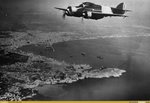 avc_00179061.JPG107.4 KB · Views: 480
avc_00179061.JPG107.4 KB · Views: 480 -
 Savoia%20Marchetti%20SM-79%20Sparviero%20002.jpg102.8 KB · Views: 598
Savoia%20Marchetti%20SM-79%20Sparviero%20002.jpg102.8 KB · Views: 598 -
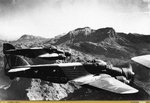 avc_00178131.jpg167.1 KB · Views: 513
avc_00178131.jpg167.1 KB · Views: 513 -
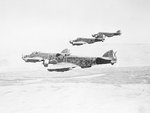 2804-1.jpg45.1 KB · Views: 513
2804-1.jpg45.1 KB · Views: 513 -
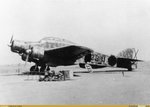 avc_00238514.jpg87.4 KB · Views: 386
avc_00238514.jpg87.4 KB · Views: 386 -
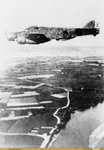 avc_00250850.jpg284 KB · Views: 447
avc_00250850.jpg284 KB · Views: 447
Last edited:
- Thread starter
- #111
The engines fitted to the main bomber version were three 582 kW (780 hp) Alfa Romeo 126 RC.34 radials, equipped with variable-pitch, all-metal three-bladed propellers. Speeds attained were around 430 km/h (270 mph) at 4,250 m (13,940 ft), with a relatively low practical ceiling of 6,500 m (21,330 ft). Cruise speed was 373 km/h (232 mph) at 5,000 m (16,400 ft), but the best cruise speed was 259 km/h/161 mph (60% power). The landing was characterized by a 200 km/h (120 mph) final approach with the slats extended, slowing to 145 km/h (90 mph) with extension of flaps, and finally the run over the field with only 200 m (656 ft) needed to land (2,050 rpm, 644 Hg pressure).
The SM.79 was a good performer, its wooden structure being light enough to allow it to stay afloat for up to half an hour in case of water landing giving the crew ample time to escape, and the front engine giving some protection against anti aircraft fire. It was also capable of a relatively quick climb, had a good turn-of-speed for its time, and its rugged structure and responsiveness allowed the aircraft be to looped (with care). Effective torpedo bombing range was between 500 and 1,000 m (1,640 and 3,280 ft)from the target. SM.79s often flew at low level above the ships before the aerial torpedo was launched, and so were targeted by every weapon available, from infantry small arms to the heavy artillery. The Sparviero had several advantages compared to British torpedo bombers, including a higher top speed and greater range. Neither the Blackburn Skua nor Gloster Gladiator presented a real threat to the Sparviero, being 90 and 10 km/h (60 and 6 mph) slower, respectively. Soon however, the Sparviero faced the Hawker Hurricane and the Fairey Fulmar which was faster but still quite slow in relation to other escort fighters. Beaufighters were fast and well-armed, and as well as being effective long-range day fighters, were successful night interceptors and late in the war often chased Sparvieros in night missions. Eventually, P-40s, P-38s, Martlet and Spitfires made their début in the Mediterranean, preventing Sparviero operations during the day.
The SM.79 was a good performer, its wooden structure being light enough to allow it to stay afloat for up to half an hour in case of water landing giving the crew ample time to escape, and the front engine giving some protection against anti aircraft fire. It was also capable of a relatively quick climb, had a good turn-of-speed for its time, and its rugged structure and responsiveness allowed the aircraft be to looped (with care). Effective torpedo bombing range was between 500 and 1,000 m (1,640 and 3,280 ft)from the target. SM.79s often flew at low level above the ships before the aerial torpedo was launched, and so were targeted by every weapon available, from infantry small arms to the heavy artillery. The Sparviero had several advantages compared to British torpedo bombers, including a higher top speed and greater range. Neither the Blackburn Skua nor Gloster Gladiator presented a real threat to the Sparviero, being 90 and 10 km/h (60 and 6 mph) slower, respectively. Soon however, the Sparviero faced the Hawker Hurricane and the Fairey Fulmar which was faster but still quite slow in relation to other escort fighters. Beaufighters were fast and well-armed, and as well as being effective long-range day fighters, were successful night interceptors and late in the war often chased Sparvieros in night missions. Eventually, P-40s, P-38s, Martlet and Spitfires made their début in the Mediterranean, preventing Sparviero operations during the day.
Attachments
-
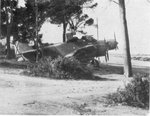 Savoia%20Marchetti%20SM-79%20Sparviero%20007.jpg149.2 KB · Views: 590
Savoia%20Marchetti%20SM-79%20Sparviero%20007.jpg149.2 KB · Views: 590 -
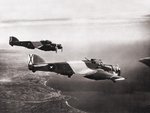 Savoia%20Marchetti%20SM-79%20Sparviero%20003.jpg146.5 KB · Views: 602
Savoia%20Marchetti%20SM-79%20Sparviero%20003.jpg146.5 KB · Views: 602 -
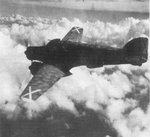 Savoia%20Marchetti%20SM-79%20Sparviero%20005.jpg124.7 KB · Views: 669
Savoia%20Marchetti%20SM-79%20Sparviero%20005.jpg124.7 KB · Views: 669 -
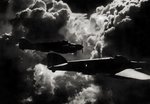 Savoia%20Marchetti%20SM-79%20Sparviero%20004.jpg88.5 KB · Views: 488
Savoia%20Marchetti%20SM-79%20Sparviero%20004.jpg88.5 KB · Views: 488 -
 Savoia%20Marchetti%20SM-79%20Sparviero%20006.jpg109.9 KB · Views: 467
Savoia%20Marchetti%20SM-79%20Sparviero%20006.jpg109.9 KB · Views: 467
Last edited:
- Thread starter
- #112
The SM.79 saw action for the first time when serving with the Aviazione Legionaria, an Italian unit sent to assist Franco's Nationalist forces during the Spanish Civil War. The "Sparviero" started its operational service at the end of 1936 when 8° Stormo B.T. (Bombardamento Tattico), with Gruppi XXVII° and XXVIII°, under the command of Tenente Colonnello Riccardo Seidl, was sent to Spain. Deployed to the Balearic Islands, the unit named "Falchi delle Baleari" (Baleari Hawks) and operated against Catalonia and the main cities of western Spain, attacking the Second Spanish Republic. During the three years of the civil conflict, over 100 SM.79s served as bombers and only four were lost. Thanks to the experience gained in Spain, the SM.79-II, introduced in October 1939, formed the backbone of the Italian bomber force during World War II.
Attachments
-
 Savoia%20Marchetti%20SM-79%20Sparviero%200012.jpg79.5 KB · Views: 472
Savoia%20Marchetti%20SM-79%20Sparviero%200012.jpg79.5 KB · Views: 472 -
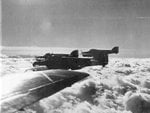 Savoia%20Marchetti%20SM-79%20Sparviero%200011.jpg139.8 KB · Views: 486
Savoia%20Marchetti%20SM-79%20Sparviero%200011.jpg139.8 KB · Views: 486 -
 Savoia%20Marchetti%20SM-79%20Sparviero%200010.jpg115.7 KB · Views: 558
Savoia%20Marchetti%20SM-79%20Sparviero%200010.jpg115.7 KB · Views: 558 -
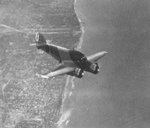 Savoia%20Marchetti%20SM-79%20Sparviero%20009.jpg157.8 KB · Views: 680
Savoia%20Marchetti%20SM-79%20Sparviero%20009.jpg157.8 KB · Views: 680 -
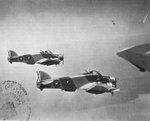 Savoia%20Marchetti%20SM-79%20Sparviero%20008.jpg129.7 KB · Views: 556
Savoia%20Marchetti%20SM-79%20Sparviero%20008.jpg129.7 KB · Views: 556
Last edited:
- Thread starter
- #113
More pics
Attachments
Last edited:
- Thread starter
- #114
More pics
Attachments
-
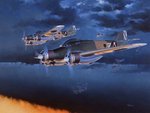 Savoia%20Marchetti%20SM-79%20Sparviero%20en%20mision%20de%20bombardeo.jpg85.1 KB · Views: 604
Savoia%20Marchetti%20SM-79%20Sparviero%20en%20mision%20de%20bombardeo.jpg85.1 KB · Views: 604 -
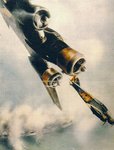 Savoia%20Marchetti%20SM-79%20Sparviero%20picando%20sobre%20Barcelona.jpg258.8 KB · Views: 591
Savoia%20Marchetti%20SM-79%20Sparviero%20picando%20sobre%20Barcelona.jpg258.8 KB · Views: 591 -
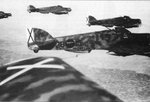 Savoia%20Marchetti%20SM-79%20Sparviero%200023.jpg80.1 KB · Views: 572
Savoia%20Marchetti%20SM-79%20Sparviero%200023.jpg80.1 KB · Views: 572 -
 Savoia%20Marchetti%20SM-79%20Sparviero%200020.jpg95.4 KB · Views: 417
Savoia%20Marchetti%20SM-79%20Sparviero%200020.jpg95.4 KB · Views: 417 -
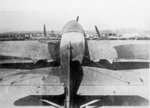 Savoia%20Marchetti%20SM-79%20Sparviero%200022.jpg93.5 KB · Views: 540
Savoia%20Marchetti%20SM-79%20Sparviero%200022.jpg93.5 KB · Views: 540
Last edited:
Interesting stuff....
Good stuff!
vikingBerserker
Lieutenant General
Very cool!
- Thread starter
- #118
More pics
Attachments
-
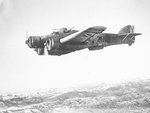 Savoia%20Marchetti%20SM-79%20Sparviero%200024.jpg67.9 KB · Views: 613
Savoia%20Marchetti%20SM-79%20Sparviero%200024.jpg67.9 KB · Views: 613 -
 Savoia%20Marchetti%20SM-79%20Sparviero%200025.jpg99.4 KB · Views: 595
Savoia%20Marchetti%20SM-79%20Sparviero%200025.jpg99.4 KB · Views: 595 -
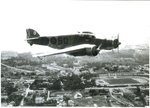 Savoia%20Marchetti%20SM-79%20Sparviero%200026.jpg93.7 KB · Views: 474
Savoia%20Marchetti%20SM-79%20Sparviero%200026.jpg93.7 KB · Views: 474 -
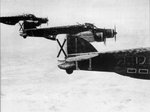 Savoia%20Marchetti%20SM-79%20Sparviero%200027.jpg69.3 KB · Views: 587
Savoia%20Marchetti%20SM-79%20Sparviero%200027.jpg69.3 KB · Views: 587 -
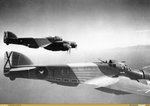 avc_00203070.jpg202.2 KB · Views: 723
avc_00203070.jpg202.2 KB · Views: 723
Last edited:
Nice pics, thank you gekho.
But have you got spanish furies pictures in respublican colors ?
BTW maybe some of your historical datas need to be updated...
Felix Urtubi's Fury ( 4-2) made a forced landing near Albuquerque behind nationalists lines after the pilot gets lost in unknown region, in september.
It was then naturaly captured by nationalist forces, transferred in Tablada, was repeared there and recieved new number 4w-1. He realised operational missions for Seville protection aera. In 45 it recieved C2-1 number and reminded in service until 1950.
On september the 16, Garcia Lacalle shooted down at least one Fiat CR-32 with his 4-1, the pilot Francesci bailed out and was captured by respublicans.
When Lacalle left the unit to handle I-15s the plane went to Aeronautica Naval pilot Javier Jover Rovica that soon had an accident touching electric wires near to the ground.
The wreckage was send to la Rabasa factory, when altogether with the remains of the 4-3 it was use to rebuld with extreme difficulty another plane, keeping the 4-1 register number.
From march 1937 the survivor is used to protect La Rabasa and Alicante region. Later Felix Sampil Fernandez took it out for La Ribera/San Javier fighter school when he served a certain time, before we loose all traces about the plane there.
All from José Fernandez, Michel Ledet and Juan Arraez Cerda. Avions HS N° 3 1995
Regards
But have you got spanish furies pictures in respublican colors ?
BTW maybe some of your historical datas need to be updated...
One Fury made a forced landing behind enemy lines due to a lack of fuel and was repaired by the Nationalists, although it was not used operationally,
Felix Urtubi's Fury ( 4-2) made a forced landing near Albuquerque behind nationalists lines after the pilot gets lost in unknown region, in september.
It was then naturaly captured by nationalist forces, transferred in Tablada, was repeared there and recieved new number 4w-1. He realised operational missions for Seville protection aera. In 45 it recieved C2-1 number and reminded in service until 1950.
It seems that respublicans used all of three Furies operationnaly. Garcia Lacalle crashed the unarmed 4-3 at Guadalajara at very beginning of the war. Two other reminding planes were intensilvely used with 2 .303 Vickers mg taken from Hispano NiD-52 planes, in Madrid aera. Altogether by Garcia Lacalle, Urtubi, Pana and Puparelli even the last one being the unit's leader, prefers the Boeing 281.while the Republicans used one of the Furies in the defence of Madrid until wrecked in a crash in November 1936
On september the 16, Garcia Lacalle shooted down at least one Fiat CR-32 with his 4-1, the pilot Francesci bailed out and was captured by respublicans.
When Lacalle left the unit to handle I-15s the plane went to Aeronautica Naval pilot Javier Jover Rovica that soon had an accident touching electric wires near to the ground.
The wreckage was send to la Rabasa factory, when altogether with the remains of the 4-3 it was use to rebuld with extreme difficulty another plane, keeping the 4-1 register number.
From march 1937 the survivor is used to protect La Rabasa and Alicante region. Later Felix Sampil Fernandez took it out for La Ribera/San Javier fighter school when he served a certain time, before we loose all traces about the plane there.
All from José Fernandez, Michel Ledet and Juan Arraez Cerda. Avions HS N° 3 1995
Regards
Last edited:
- Thread starter
- #120
Users who are viewing this thread
Total: 1 (members: 0, guests: 1)

